Where to Eat in Paris, Beyond Traditional French Food

Photograph by Joann Pai
Paris has always been one of the world’s preeminent dining cities. It was the first to bring modern restaurants to life, birthing one of the most respected culinary repertoires in the world, and it is known across the globe for iconic dishes like boeuf bourguignon and steak frites.
But Paris is so much more than flaky croissants and perfect saucisse purée. It’s also a destination for an omakase featuring fresh pasta alongside tempura, Lao-style crispy shrimp, and tasting menus rooted in African flavors and traditions—all intersecting with the best French techniques and ingredients. All of this is as much the product of a long history of immigration as it is an emerging generation of chefs, bakers, and sommeliers who are expanding what French food can be through global flavors and forward-thinking styles.
These eight essential restaurants have their own bold points of view, but all play a role in shaping the current culinary landscape. Some are new, while some have a long history—but all prove how, after all these years, Paris remains the most compelling dining city of them all.
Lao Siam
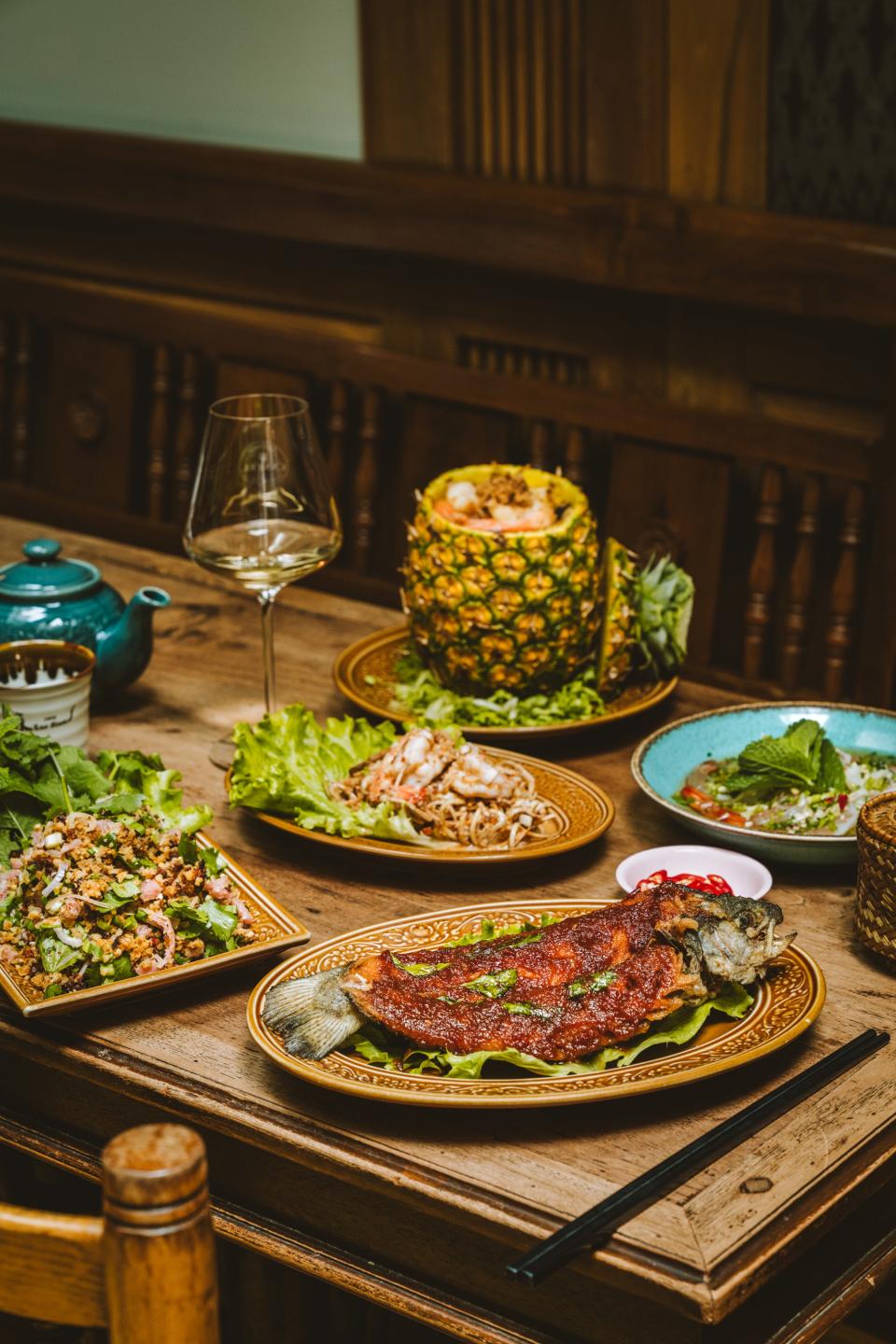
Where to Eat in Paris: Beyond Croissants and Steak Frites Bon Appetit
49 Rue de Belleville
Since 1985, Lao Siam is where Parisians in the know go for comforting Thai and Laotian cooking—and are more than happy to brave the line if they show up sans reservations. It’s now run by brothers Nicolas, Frédéric, and Alexandre Souk-Savanh, who took over the business from their parents. The dining rooms and lighting got a refresher, but the kitchen experienced the most significant change. The menu is now tighter and more focused, featuring pan-fried prawns swimming in a garlicky, spicy fish sauce; deep-fried trout with a punchy tamarind sauce and Thai basil; and crying tiger, a grilled beef brisket dish from northern Thailand served with a spicy house sauce.
Cheval d’Or
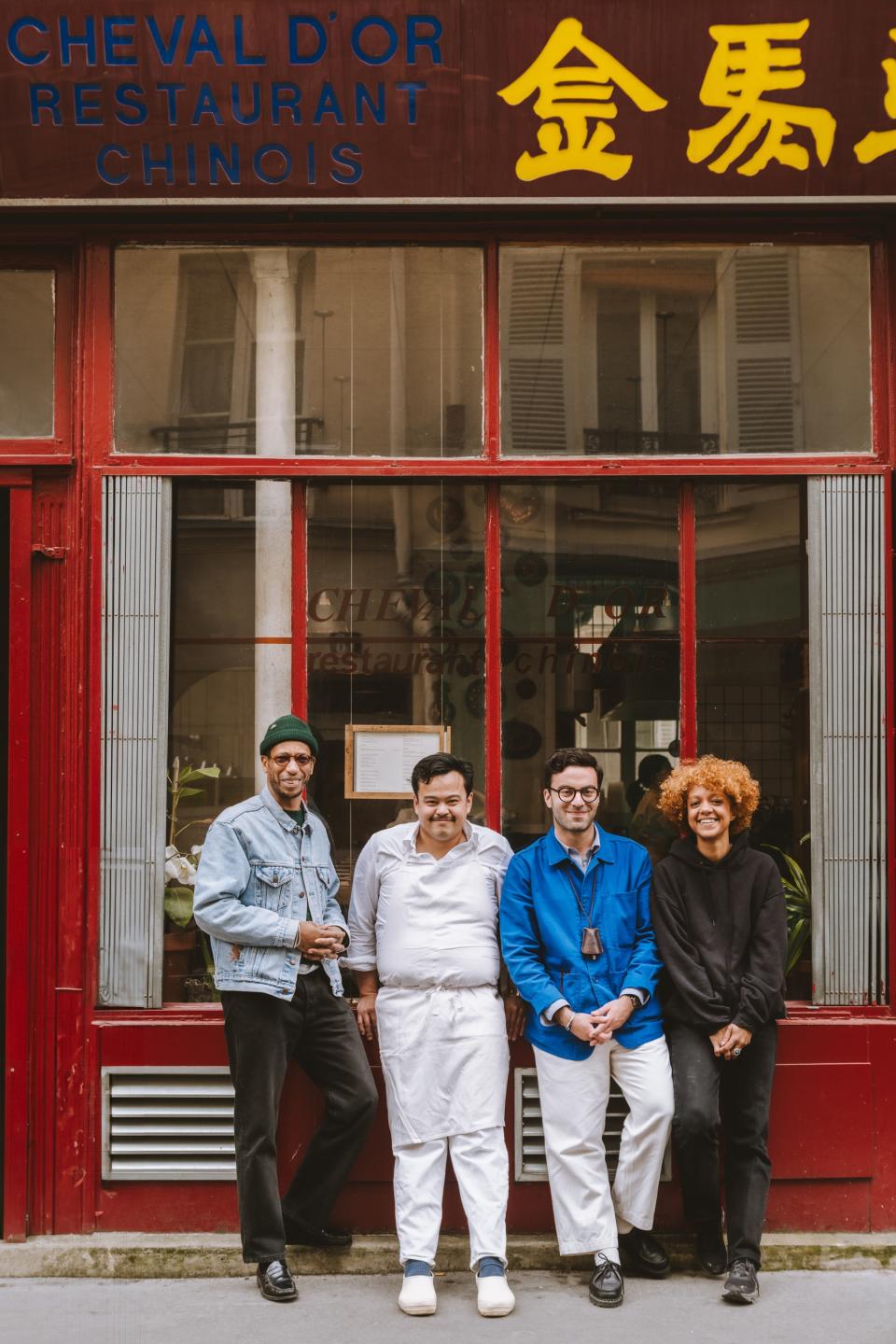
Where to Eat in Paris: Beyond Croissants and Steak Frites
21 Rue de la Villette
That this restaurant exists in Belleville is hardly surprising, given the neighborhood’s robust Chinese community thriving there since the 1970s. But Cheval d’Or is unique. This long-standing Chinese restaurant has been reenergized by four industry friends—chefs Luis Andrade and Hanz Gueco along with wine pros Crislaine Medina and Nadim Smair—whose menu features clever twists on Chinese and French classics. Think Pithiviers stuffed with lamb, shiitakes, and Sichuan pepper; a croque madame layered with shrimp and chile oil; and fresh pasta tossed with saucy mapo tofu. Wash it all down with Medina’s vin selections, a wide-ranging lineup of natural wines from all over Europe that pair especially well with the flavorful dishes.
While you’re in Belleville:
Long known for its working class and immigrant roots (and bohemian flavor), this hillside neighborhood in the 19th arrondissement is worth lingering in. Start with sourdough loaves and Danishes at Le Petit Grain or make your way up the hill to Mardi, a specialty coffee shop serving sweet buns, mini Bundts, and scones. Return to rue de Belleville for a trifecta of stops: Epicerie Le Caire (Cairo, in French) for Middle Eastern spices, cheeses, fresh salads, and dips; Ama Siam, the sister restaurant to Lao Siam highlighting childhood favorites of the Souksavanh brothers (like pork belly and wild rice with a five-spice sauce); and Kissproof, an outpost of the Beirut-based bar, for creative cocktails and snacks.
MoSuke
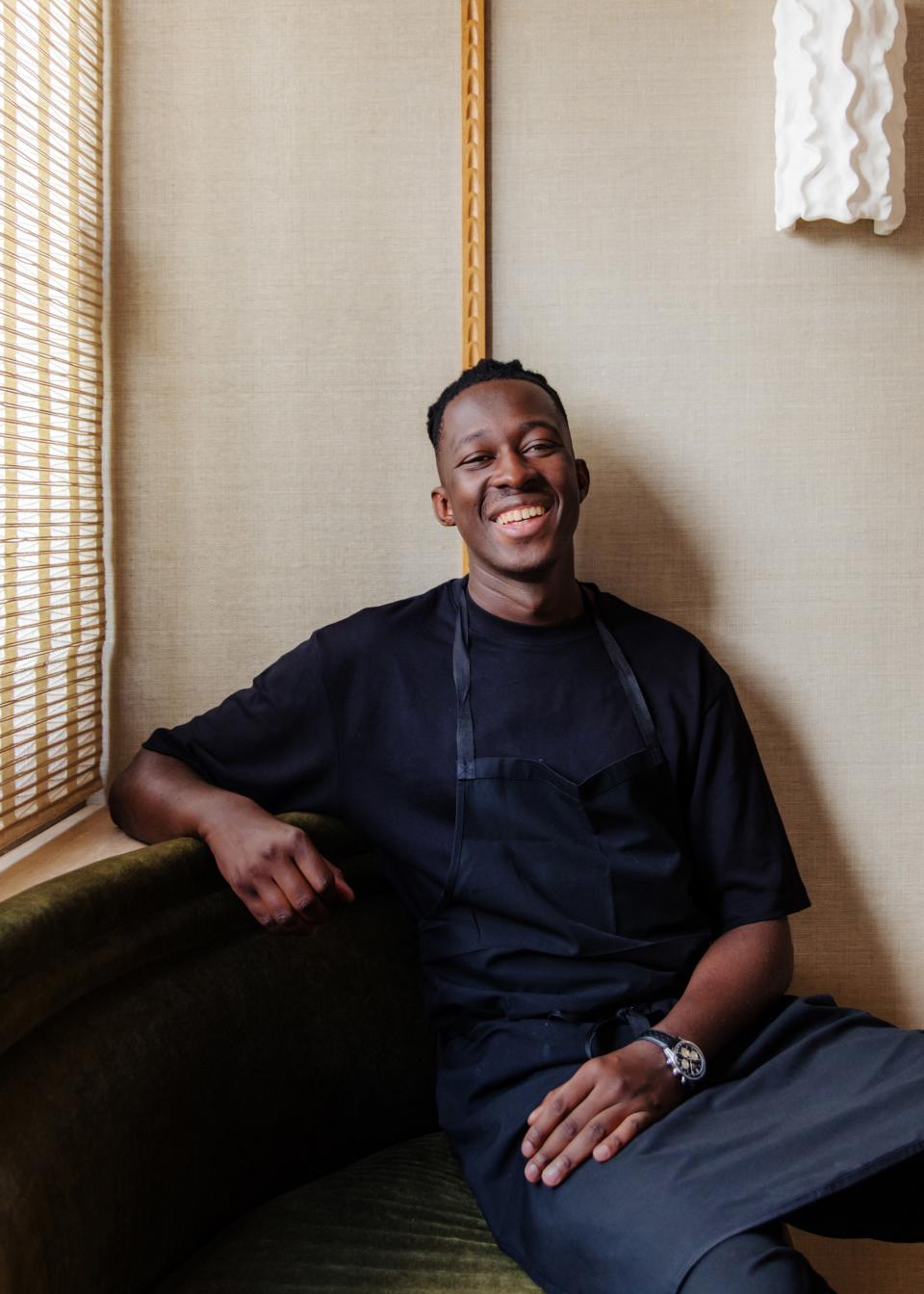
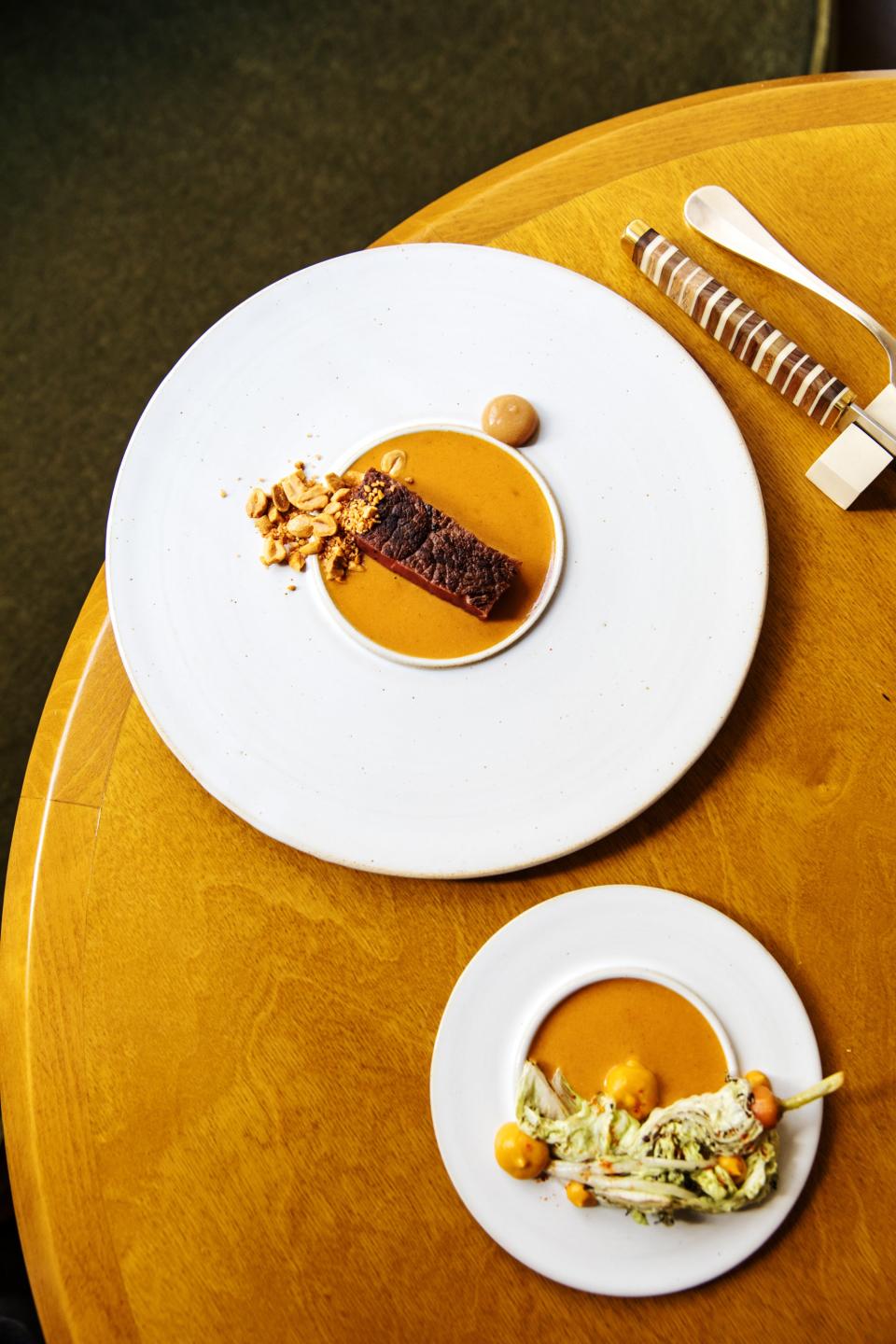
11 Rue Raymond Losserand
Mory Sacko built up a loyal following in 2019 as a contestant on Top Chef France. A year later the 31-year-old debuted his first restaurant in the 14th arrondissement, receiving a Michelin star soon after. At MoSuke, named in part after the legend of Yasuke, an African warrior who became a samurai in 16th-century Japan, Sacko draws from his Malian and Senegalese heritages and affection for Japanese culture for a tasting menu unlike any other. The set menu changes with the seasons and may feature prized Aubrac beef paired with tamarind and carrots for a riff on mafé or binchotan-grilled langoustine tails served alongside shrimpy dja sauce. But a Sacko signature that never leaves the menu is the decadent dark chocolate tart, thrillingly paired with chocolate-wasabi mousse and a scoop of wasabi ice cream.
Le Rigmarole
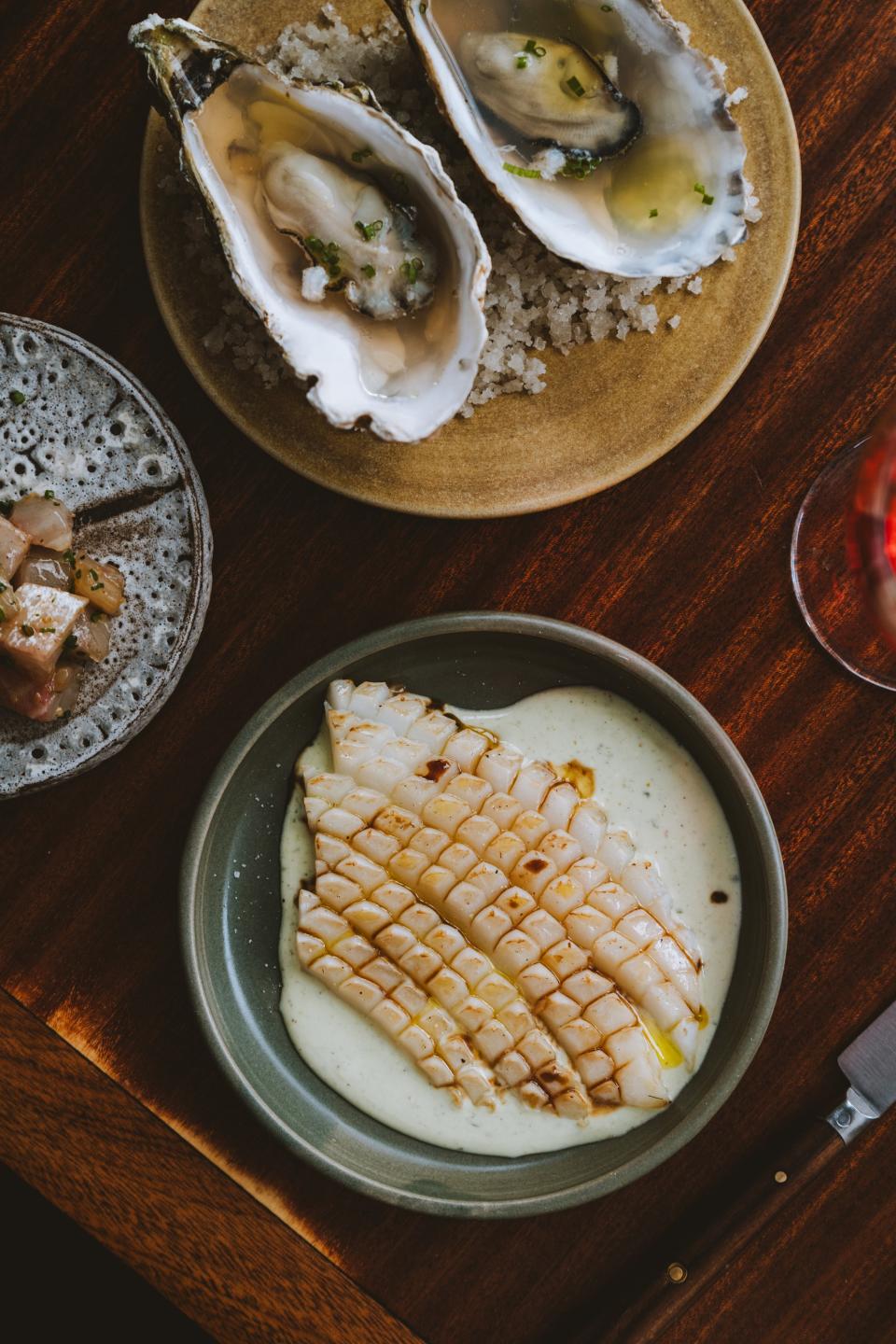
Where to Eat in Paris: Beyond Croissants and Steak Frites
10 Rue du Grand Prieuré
When Robert Compagnon and Jessica Yang opened their omakase-style restaurant six years ago, they shook up the tasting menu format for the whole city. The unassuming power couple met while cooking at Guy Savoy, and together they pull from a range of influences for a menu that reads a bit like an eclectic ingredient list. Open only for lunch—a long, joyful, and relaxed service—the meal at the 11th arrondissement restaurant usually begins with pickled vegetables and continues with a series of binchotan-grilled skewers (which may include chicken heart or artery), fresh pasta, fish tartare, tempura-fried seasonal stars like butternut squash, and artisanal ice cream (the star of their adjacent spot, Folderol).
Kubri
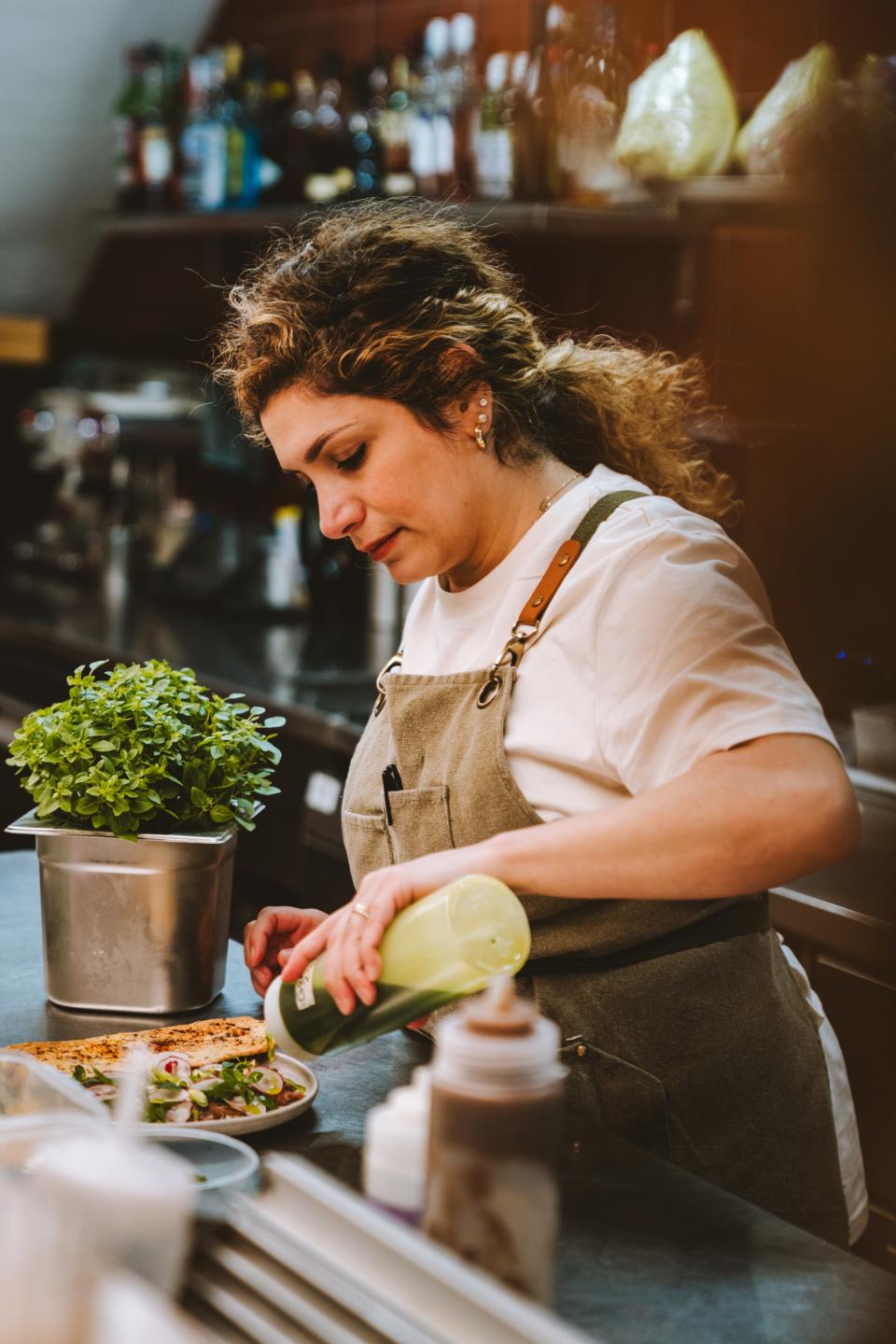
Where to Eat in Paris: Beyond Croissants and Steak Frites
108 Rue Amelot
Lebanese cooking has deep roots in Paris, but no one has so successfully (or creatively) made it their own as chef Rita Higgins. At Kubri, on the edge of the 11th arrondissement, she pulls from her Lebanese heritage and six years of living and cooking in Japan to create a menu that remixes Lebanese tradition, French ingredients, and Japanese technique. That approach comes to life in must-order dishes like the imsabaha, traditionally a chickpea stew reimagined with grilled octopus, coriander salsa, and pickled turnips, or wild garlic butter asparagus fatteh, an old-school Levantine dish of garlic yogurt and crispy bread that Higgins jazzes up with bottarga. Be sure to get the muhallabiyeh for dessert, a Lebanese milk pudding layered with a rhubarb compote and presented in a crispy phyllo cup.
Le Tagine
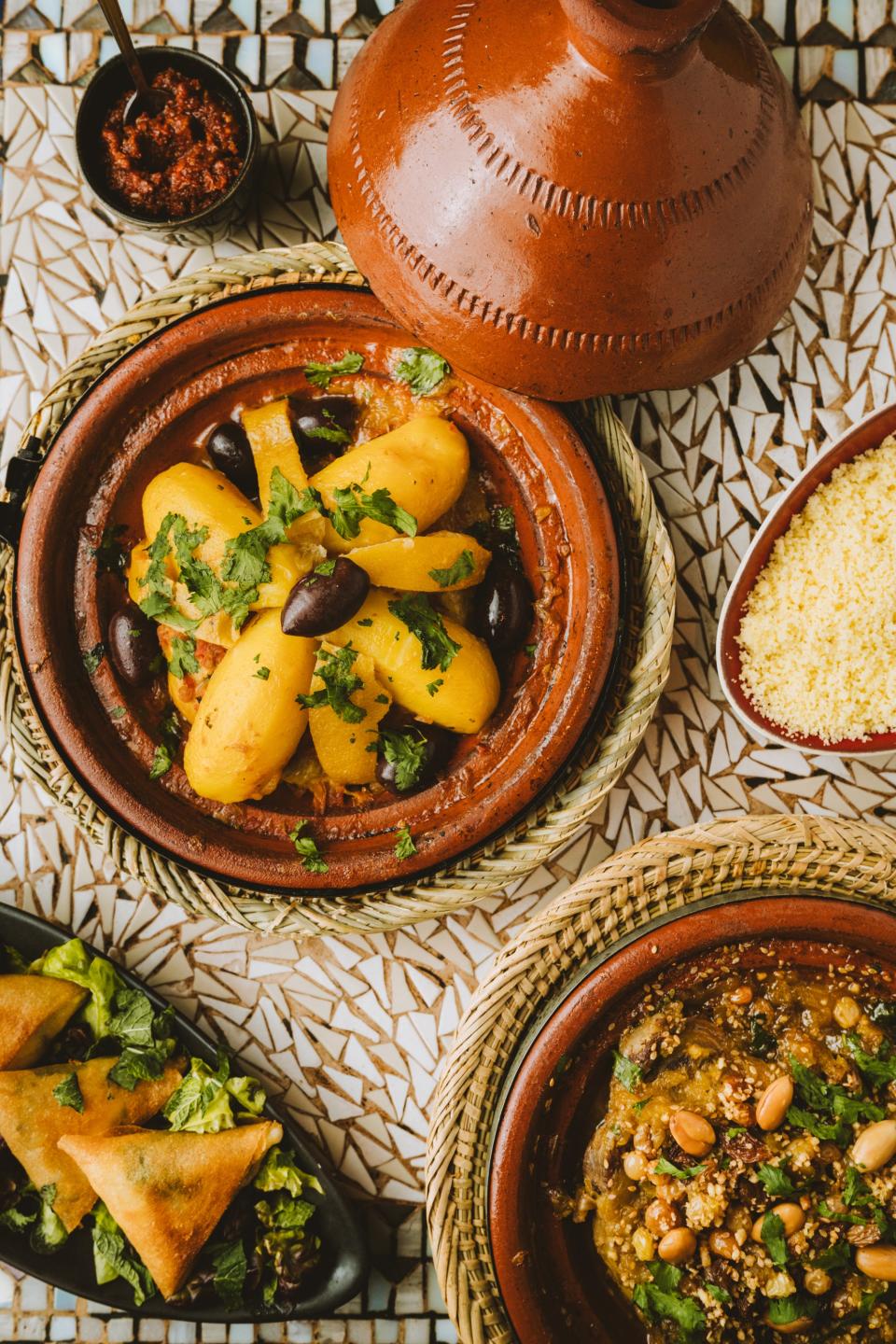
Where to Eat in Paris: Beyond Croissants and Steak Frites
13 Rue de Crussol
Couscous and tagine are as archetypal to the Parisian palate as steak frites and rotisserie chicken, and Le Tagine has been crafting the city’s best Moroccan food for over 40 years. This intimate restaurant in the 11th arrondissement from French Moroccan owners Marie-Josée and (the late) Michel Mimoun was pioneering from the start, with an almost militant focus on serving only natural wines—a rarity then— and solely using high-quality ingredients from small producers, such as milk-fed lamb from a farm in the Pyrénées and spices supplied by the 200-year-old family-run shop Thiercelin. That focus endures today, inside an inviting dining room outfitted with ornate moucharabieh lanterns and the same offering of top-tier tagines. They’re best paired with dishes of homemade semolina couscous, which come with 10 different combinations of tender vegetables and meats.
While you’re in Oberkampf:
From its past as a 19th-century metalworking hub to its modern status as a nightlife destination, Oberkampf has always been full of life. And now more than ever, it hums with a myriad of exciting food and drink offerings. Try sencha-and-puffed-rice bread and sesame éclairs from Utopie, then swing by Kapé, a Filipino coffee shop, for an ube latte. Indulge in a leisurely lunch at Mala Boom, the city’s first Sichuan mala dry pot restaurant (Note: It doesn’t dial down the spice), then ring in apéro hour at the rustic natural wine bar Delicatessen Place.
Espadon
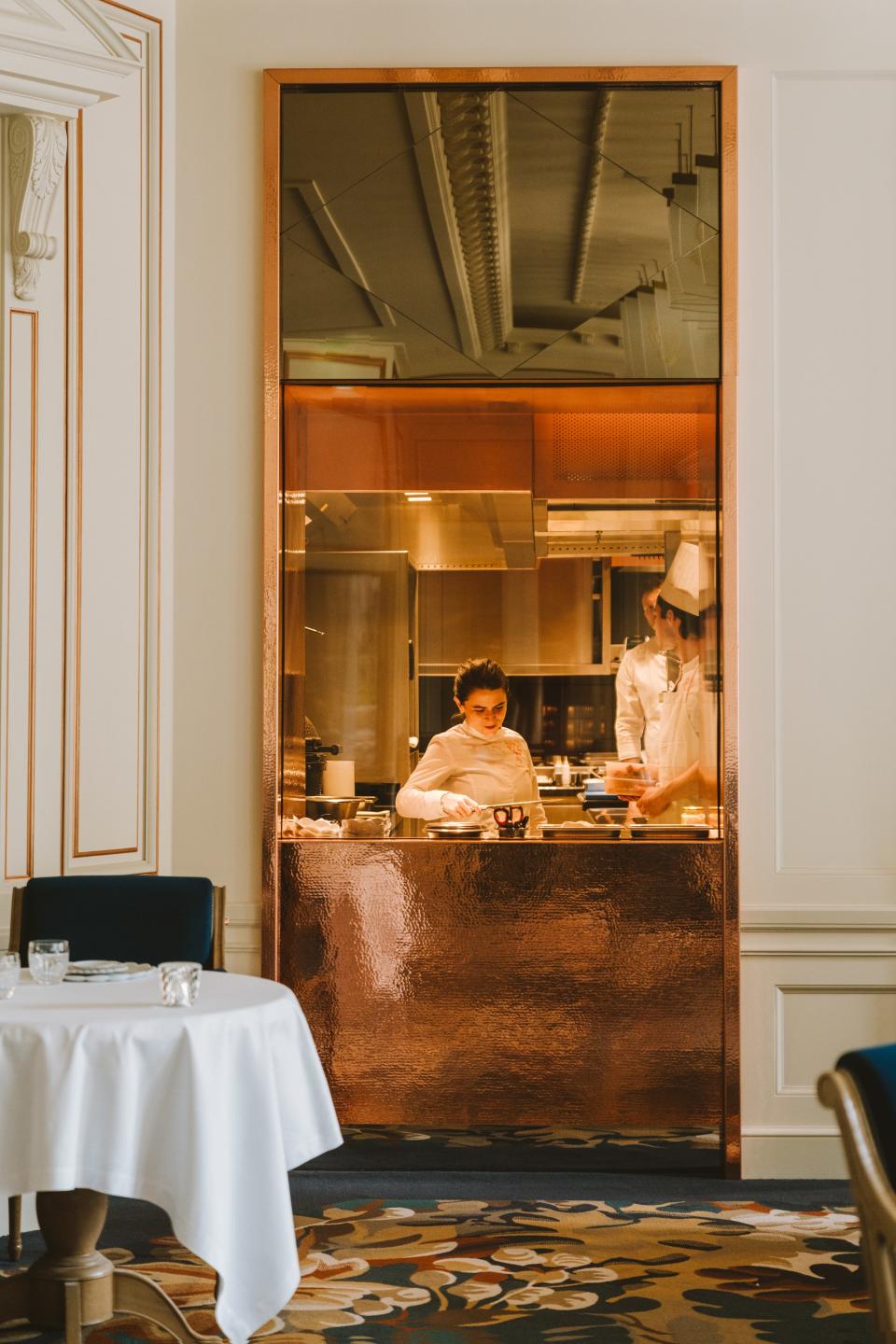
Where to Eat in Paris: Beyond Croissants and Steak Frites
15 Pl. Vendôme
Chef Eugénie Béziat is the first woman to lead the dining program at the five-star Ritz Paris hotel in the 1st arrondissement, and here she departs from French classicism for a distinctly personal style informed by her upbringing in Gabon, Congo, and Côte d’Ivoire. You can taste it in dishes like grilled lobster tail, which comes with lacto-fermented cassava semolina and a spoonful of bissap (hibiscus) fermented like beer and reduced into a sauce, and the roasted heirloom chicken alongside a tartlet topped with yassa-style minced thigh meat. Opt for the Mets & Sensation experience, which pairs each dish with wines, eaux-de-vie, infusions, and even broths.
Datil
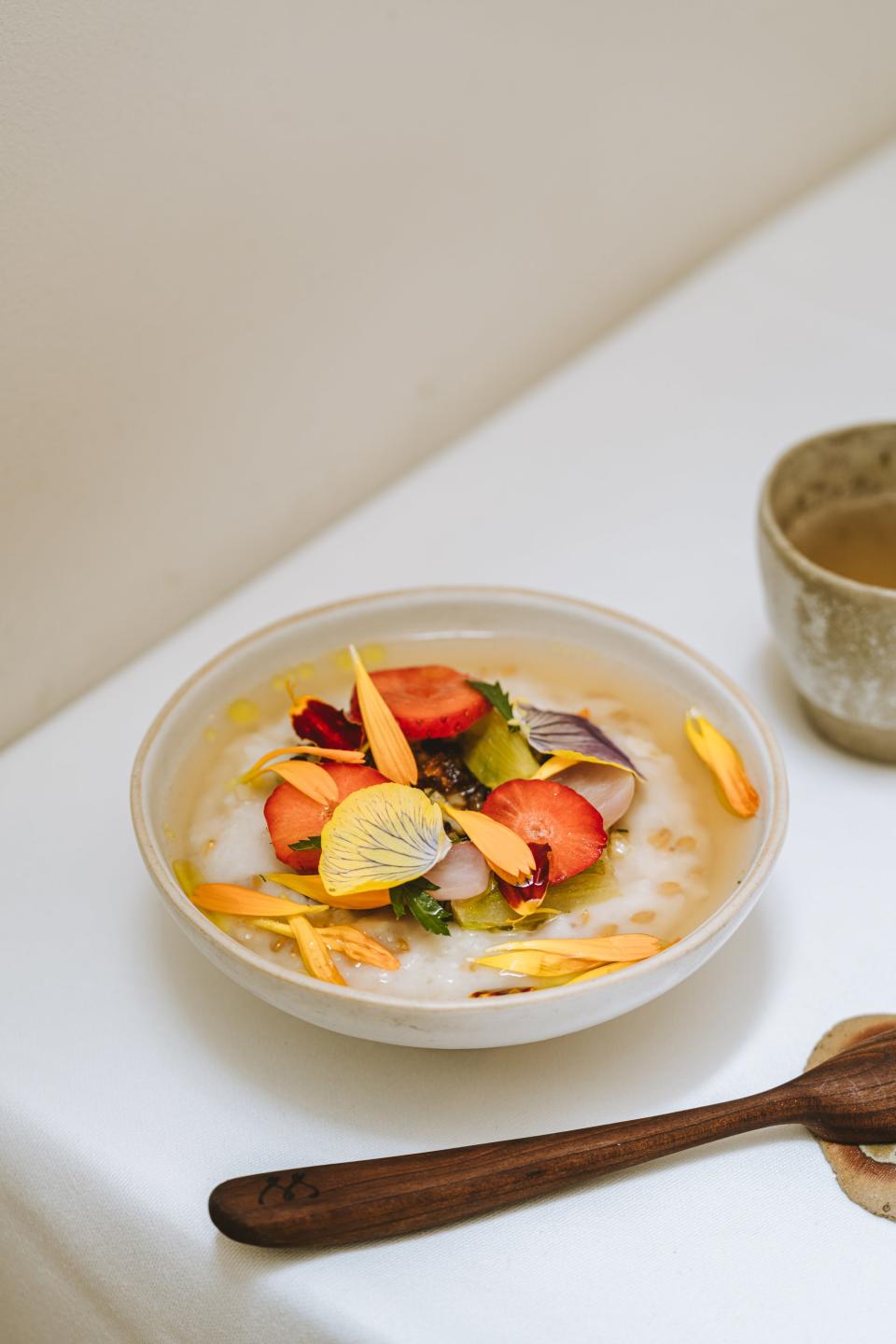
Where to Eat in Paris: Beyond Croissants and Steak Frites Bon Appetit
13 Rue des Gravilliers
As spectacular as the produce is in France, plant-forward restaurants have been slow to catch on. Chef Manon Fleury might be the one to change that at her first solo restaurant in the North Marais. The chef and her largely woman-dominated team work closely with small producers and farmers to develop dishes that raise awareness around plant-first, low-waste cooking, and, most important, the need to adapt the plate to new climate realities. That message comes through with great subtlety in casual conversations with knowledgeable servers and through fiercely seasonal dishes such as springtime white asparagus dressed in a sesame and orange blossom crème and presented in a consommé of asparagus peelings and trimmings.
While you’re in the North Marais:
Historically home to the city’s earliest Jewish and Chinese communities, this part of the Marais continues to be dynamic and delicious. Head to Bing Sutt, a Hong Kong–style café serving milk tea, egg tarts, and pineapple buns, or Christophe Louie’s namesake patisserie for panettone (his specialty). A few blocks from the Place de la République is Banh-Mi, which makes the Vietnamese sandwich on a crispy baguette with thin slices of Vietnamese mortadella, pickled vegetables, and plenty of Maggi. For sweets, Jacques Genin’s chocolates and candied fruit make excellent and easy-to-transport souvenirs, which you should pick up before ending the day with cocktails and savory pie at the Cambridge Public House.
Originally Appeared on Bon Appétit
More Restaurant Stories From Bon Appétit
Get Bon Appétit in your inbox with our daily newsletter.
Check out our list of the best new restaurants of 2023.
These are the semifinalists for the 2024 James Beard Chef and Restaurant awards.
Where to find the best donuts in Portland, OR.
How to send back a dish at a restaurant, according to etiquette experts.
Check out our most anticipated restaurant opennings for 2024.
Chris Morocco solves your kitchen emergencies on our podcast, Dinner SOS.
The new Epicurious App is here with over 50,000 recipes.


